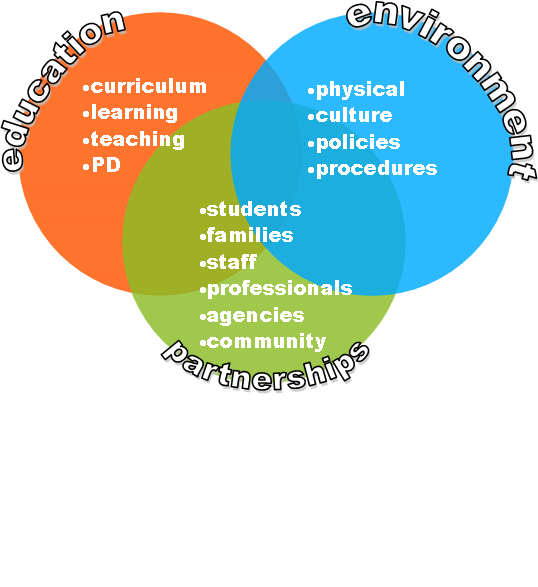
Learning objective
Students explore the physical features of people and identify similarities and differences between them.
Take home messages
Curriculum links
HPE: Being healthy, safe and active
- The different parts of the body and where they are located.
International technical guidance on sexuality education
Key concept 4.2 (5-8years)
- Everybody has the right to decide who can touch their body, where and in what way.
Materials
- Images of people with different body types and physical features, e.g. Everyone's Got a Bottom picture book (page 24 - picture of family).
- Craft supplies (glue, scissors, wool, coloured paper/card).
- Student activity sheet: Child body outlines.
Before you get started
- It is recommended and age appropriate that students at this level learn the correct names of their external body parts, including sexual parts, e.g. penis, vulva, breast, testicles and buttocks (or bottom). Knowing these names enables children to communicate clearly if they need to get help; and in particular, in cases of abuse or injury. For more information see the FAQ: How early should you introduce the names of body parts?
- Protective interrupting - All staff in the room need to know and understand how to use this technique to prevent students from potentially disclosing sensitive information or abuse in front of other students.
- Dealing with disclosures - All staff in the room must be aware of the school and legal procedures if a student discloses personal issues, particularly disclosures of sexual abuse.
Learning activities
Picture Talk
10 min
- Show children the images on page 24 of Everyone's Got a Bottom. (NB: The shared reading of the book is part of Pre-primary Learning activity: Private vs public bodies).
- Invite suggestions from students for adjectives that can be used to describe different physical features. For example:
This is Ben. What colour is Ben's hair?
(black)
This is Ben's little sister, Emma. How is Ben's hair different from his sister's hair?
(brown)
This is Ben's little brother, Jack. What do you notice about Ben's brother's hair? Why do you think it is different?
(light brown and curly, like his dad's, could be step-brother or half brother, could be foster child or adopted)
In order from tallest to smallest, name the characters. Why is Ben the tallest?
(Emma, Jack, Ben. Ben is the oldest)
Are the oldest people always the tallest?
(no, people can be shorter than people that are older than them. People are all different heights)
Body outlines
20 min
Independent or Small Group
- Provide each student with an A3 copy of the Student activity sheet: Child body outlines.
- Ask students to share their thoughts about the body outlines:
Do you think this body outline is a boy or girl? Why?
(Students may give a range of ideas encourage them to justify their response. E.g. Boy - looks like it has short hair. Do all boys have short hair?)
How is this body outline the same as your body?
(legs, arms, fingers, head, etc)
How is it different?
(I am shorter/taller, I have long hair, I have eyes/nose/other features not identifiable on the outline)
What parts of our bodies are quite similar to other people?
(arms, legs, brain, lungs, heart, toes, etc)
What parts of our bodies can be very different to other people?
(hair - colour, curls/straight, eye colour, height, penis/vulva)
Teaching tip: This provides a good opportunity to talk about body diversity. Some people are not born with some body parts, some people may have had injuries that mean their bodies look/work differently. Use this as a safe space to discuss and embrace these differences whilst also showing similarities. E.g. Our bodies allow us to live, breath, learn, love.
Teaching tip: Private body parts may come up naturally in these conversations. That is OK. Help students to refer to the body parts using the correct terminology and address them in the same way that you do any other body part. Private body parts are covered specifically in the Learning activity: Public vs private body parts.
- Students use their craft supplies to make their body outlines look different by adding different hair, colouring the skin different colours, etc. Ask students to give each of the body outlines a name.
- Have students share their work using the think-pair-share teaching strategy to verbally describe the differences they have illustrated (focusing on the variations, e.g. short hair, long hair, curly hair, straight hair, dark hair, blue eyes, brown eyes, etc).
3-2-1 Reflection
5 min
- Write the word 'similar/same' and 'different' on the board.
- Ask students to share one thing that is similar and one thing that is different that they have shown on the body outlines.
For example, "They both have blue eyes but Raj is right-handed and Jasmine is left-handed".
- Point to the words 'similar' and 'different' as the students describe the features.
Health promoting schools




